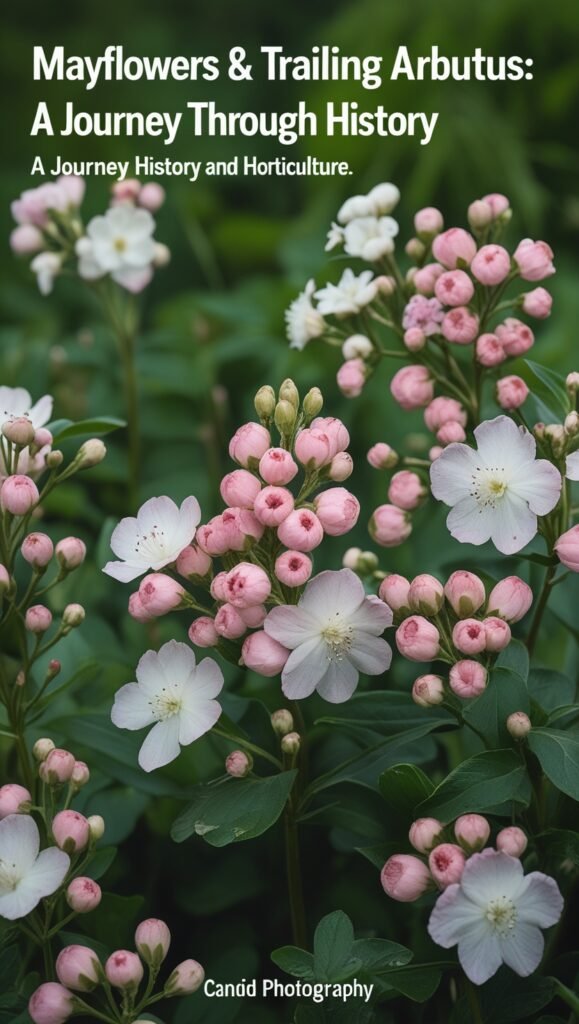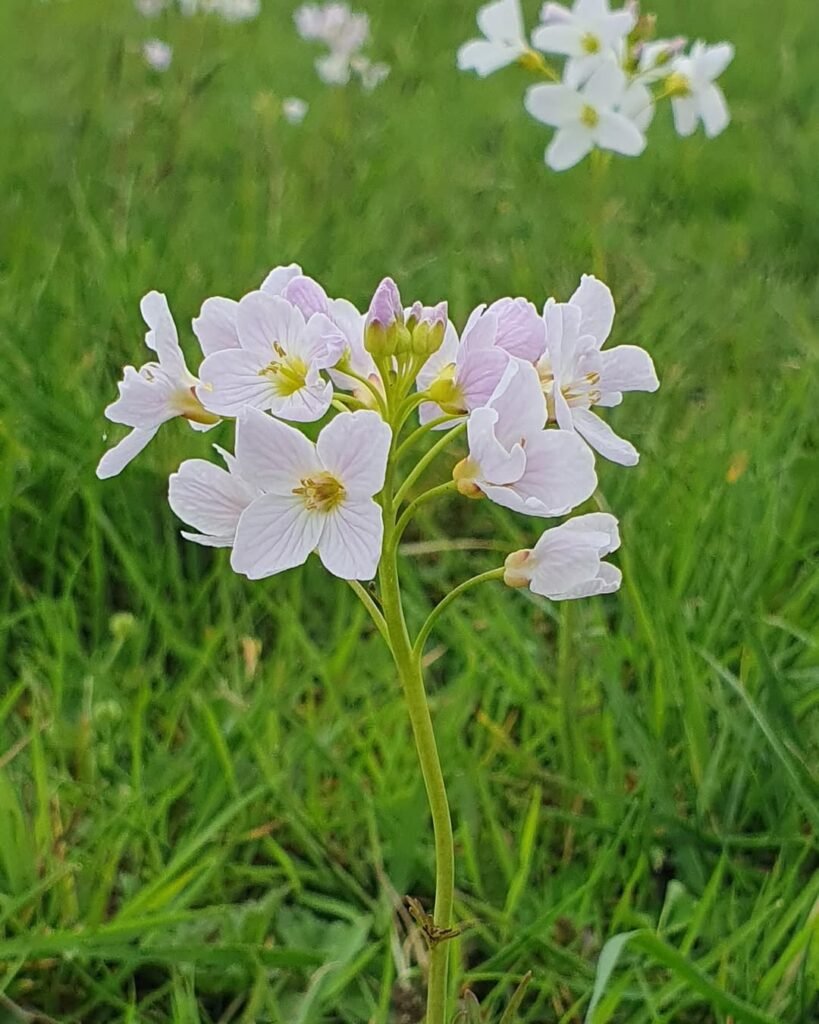Discover the history, symbolism, and uses of Trailing Arbutus, also known as the Mayflower. Learn how it connects to the Mayflower ship and get tips for growing this fragrant flower.

Have you ever stumbled upon a delicate, fragrant flower hidden beneath the forest floor, blooming bravely in the early spring? If you’re lucky, you might have encountered the Trailing Arbutus, also known as the Mayflower in parts of New England. This humble yet captivating plant has a rich history, deep symbolism, and a fascinating connection to one of America’s most iconic ships—the Mayflower. But what exactly is the “clause” that connects them? In this article, I’ll take you on a journey through the world of Mayflowers and Trailing Arbutus, sharing personal stories, gardening tips, and the historical ties that bind them together.
As a gardener with over 10 years of experience, I’ve had the pleasure of growing and admiring many plants, but few have captured my heart like the Trailing Arbutus. Whether you’re a seasoned gardener or simply a nature enthusiast, this article will answer your questions about this remarkable flower and inspire you to appreciate its beauty and significance.
What is the Trailing Arbutus?

The Trailing Arbutus (Epigaea repens) is a small, evergreen plant native to eastern North America. It’s a low-growing species, often found creeping along the forest floor in shaded, wooded areas. Its leathery, oval leaves provide a lush green backdrop for the star of the show—its delicate pink or white flowers. These blooms appear in early spring, often as early as March or April, depending on the region. What makes them truly special is their sweet, spicy fragrance, which can fill the air on a warm spring day.
I remember the first time I encountered Trailing Arbutus while hiking in the woods near my home. The scent was so captivating that I had to stop and search for its source. After a few minutes of careful looking, I found the tiny flowers peeking out from under a layer of fallen leaves. It was like discovering a hidden treasure! Trailing Arbutus is often called the Mayflower in New England, and as we’ll explore later, this name carries a deep historical significance.
What Does the Trailing Arbutus Symbolize?
Flowers have long been used to convey emotions and ideas, and the Trailing Arbutus is no exception. This flower is often seen as a symbol of perseverance and hope, as it’s one of the first to bloom after the harsh winter months. Its ability to thrive in challenging conditions—shaded forests with acidic, well-drained soil—makes it a fitting emblem of resilience.
In some cultures, the Trailing Arbutus is also associated with new beginnings and the arrival of spring. Its early bloom time signals the end of winter and the start of a season of growth and renewal. Interestingly, the flower holds special significance in Massachusetts, where it was named the state flower in 1918. This honor is likely due to its connection to the Mayflower ship and the Pilgrims, which brings us to the next part of our story.
The Mayflower Connection: How Are They Linked?

You might be wondering, “What’s the connection between the Trailing Arbutus and the Mayflower ship?” The answer lies in both history and folklore. According to legend, when the Pilgrims landed at Plymouth Rock in 1620, they were greeted by the sight and scent of the Trailing Arbutus. The flowers were said to be in bloom, offering a fragrant welcome to the weary travelers. In honor of this encounter, the ship was named the Mayflower, forever linking the plant and the vessel in American history.
While this story may be more folklore than fact, it has cemented the connection between the Trailing Arbutus and the Mayflower in popular culture. The flower is often referred to as the Mayflower in New England, and there’s even a famous poem by John Greenleaf Whittier titled “The Mayflowers” that celebrates this link. Here’s a brief excerpt:
“The trailing arbutus, or mayflower, grows abundantly in the vicinity of Plymouth, and was the first flower that greeted the Pilgrims after their fearful winter.”
This poetic tribute highlights the emotional and symbolic importance of the Trailing Arbutus to early American settlers. Whether or not the Pilgrims actually encountered these flowers upon landing, the story has endured, making the Mayflower a symbol of both the ship and the flower.
What is the Trailing Arbutus Used For?
Beyond its beauty and symbolism, the Trailing Arbutus has practical uses as well. Historically, Native Americans used the leaves of the plant to make a tea for treating kidney disorders and other ailments. The plant was also valued for its astringent properties, which made it useful in traditional medicine for treating wounds and skin conditions.
However, it’s important to note that the Trailing Arbutus is now protected in many areas due to overharvesting and habitat loss. In fact, picking the flowers or digging up the plants is illegal in some states, including Massachusetts. So, while it’s tempting to bring these fragrant blooms home, it’s best to admire them in the wild and leave them undisturbed.
If you’re interested in learning more about the medicinal uses of plants, I recommend checking out this comprehensive guide to herbal remedies from a trusted source. Trailing Arbutus may not be as commonly used today, but its historical significance is worth appreciating.
Growing and Caring for Trailing Arbutus: A Gardener’s Guide
As a gardener, you might be wondering, “Can I grow Trailing Arbutus in my own garden?” The answer is yes, but it comes with a few challenges. This plant is notoriously slow-growing and can be difficult to establish, but with patience and the right conditions, it’s possible to enjoy these lovely flowers at home.
Here are some tips for growing Trailing Arbutus:
- Soil: The plant prefers acidic, well-drained soil. If your garden soil is alkaline, you may need to amend it with peat moss or other acidic materials.
- Light: Trailing Arbutus thrives in partial to full shade, making it an excellent choice for woodland gardens or shaded areas.
- Water: Keep the soil consistently moist but not waterlogged. Mulching with pine needles or leaf litter can help retain moisture and mimic the plant’s natural habitat.
- Propagation: While it’s possible to grow Trailing Arbutus from seed, it’s a slow process that can take several years. I’ve found that starting with a small plant from a reputable nursery is much easier and more reliable.
If you’re looking for other shade-loving plants to complement your Trailing Arbutus, consider adding tuberous begonias to your garden. These vibrant flowers also thrive in shaded conditions and can add a pop of color to your landscape.
For more detailed information on cultivating Trailing Arbutus, I recommend visiting the University of Massachusetts Extension website, which offers excellent resources on native plants and their care.
The “Clause” That Connects Them: A Personal Reflection
Now, you might be curious about the “clause” mentioned in the title of this article. What exactly is the clause that connects Mayflowers and Trailing Arbutus? In this context, the “clause” refers to a specific condition or exception related to the plant’s use and preservation.
In a blog post from Growing With Plants, the author shares a touching story about picking a single stem of Trailing Arbutus for his elderly father, who could no longer see the flowers but could still appreciate their scent. The author proposes a “Trailing Arbutus Clause,” suggesting that if one raises their own native plants from seed and if one is born before a certain historical event (in this case, the Titanic disaster), they may pick a single stem of Mayflowers.
While this clause is more of a personal sentiment than a legal or official rule, it highlights the deep emotional connection many people have with this plant. It also serves as a reminder of the importance of preserving and respecting native species, especially those that are protected or endangered.
In my own gardening journey, I’ve come to appreciate the delicate balance between enjoying nature’s beauty and ensuring its preservation for future generations. Whether it’s through responsible gardening practices or simply taking the time to admire wildflowers in their natural habitat, we can all play a part in protecting plants like the Trailing Arbutus.
Conclusion: Celebrating the Magic of Mayflowers
The Trailing Arbutus, or Mayflower, is more than just a pretty flower—it’s a symbol of resilience, a piece of American history, and a reminder of the beauty that can be found in the most unexpected places. From its connection to the Pilgrims and the Mayflower ship to its uses in traditional medicine, this plant has a rich story to tell.
As gardeners and nature lovers, we have the privilege of witnessing the magic of plants like the Trailing Arbutus up close. Whether you’re growing it in your own garden or simply enjoying its fragrance on a springtime hike, take a moment to appreciate its significance and the role it plays in our natural world.
If you’re inspired to learn more about native plants or want to explore other gardening topics, be sure to check out these related articles on USA Garden Hub:
And for those who want to dive deeper into the history and symbolism of the Mayflower, I recommend visiting the Plimoth Patuxet Museums website, which offers a wealth of information on the Pilgrims and their journey.

